Docile, easy to live with, sociable and loyal: the medium-sized Labrador Retriever is much appreciated in French homes for its qualities as ...
Docile, easy to live with, sociable and loyal: the medium-sized Labrador Retriever is much appreciated in French homes for its qualities as a companion dog. Due to his origins as a working dog, he needs to be stimulated both physically and mentally.
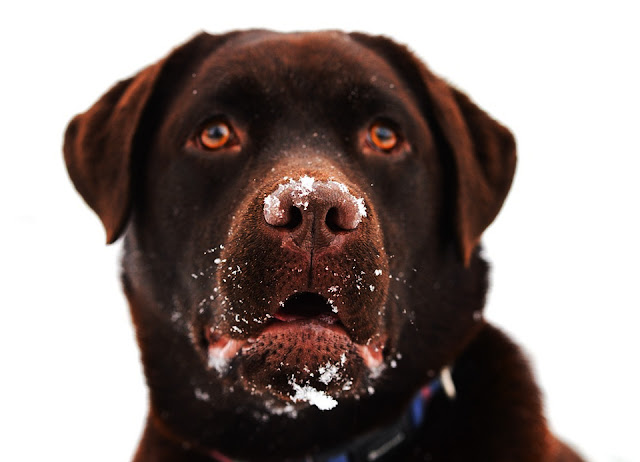
Labrador Retriever Article Summary:
- The Labrador Retriever breed
- Character of the Labrador: a hard-working dog who loves children
- Appearance of Labrador
- Beauty Labrador and Working Labrador
- History and Origin of Labrador
- Labrador Health and Breeding
- Diseases in Labrador
- Labrador Food
- Rich in meat and vegetables, low in cereals and fats
- Avoiding overweight in Labrador
- Labrador Care
- Make moments of care a daily routine
- Labrador and Sport
- Labrador Education
The Labrador Retriever breed
In Great Britain and the United States, the Labrador Retriever breed is one of the most popular dog breeds. Also in many European countries, the Labrador Retriever is one of the most successful breeds. No wonder: few other breeds of dog are so attached to man and so obedient. The Labrador Retriever's famous character and "will to please", in other words, his willingness to obey his master, make him a docile and exemplary companion dog.
The Labrador is characterized by his willingness to cooperate and by his adaptability in all situations. Generally, owners of dogs of this breed can take their companion everywhere. He is also welcome in a certain number of places! He greets strangers with a friendly look and wagging tail. This friendly and very open-minded four-legged companion is always curious! He feels most at ease in company and in good company. Shyness, aggressiveness, fear or lack of self-confidence: the Labrador Retriever knows nothing!
Character of the Labrador: a hard-working dog who loves children
The Labrador's main character trait is that he loves his surroundings, and above all, children. Labradors Retrievers are always willing to accompany their master and do not enjoy being alone for too long. Alongside their master, Labradors are characterized by their patience and balanced nature. Without a doubt, they contribute to the harmony of their family with their calm and unfailing kindness. But beware, adopting a Labrador just for these characteristics alone is really not the best thing to do: you are sure to miss out on his essential needs.
Originally bred as a hunting dog, he remains very active and loves to help out with different jobs. Breathtaking stamina, a great sense of smell, a taste for water and a talent for retrieving: these are just a few of his qualities.
In addition to the mission of companion dog that the majority of families like to entrust to him, the versatile Labrador is also used as a guide dog for the blind, a rescue dog, an avalanche dog as well as a sniffer dog for police and customs services. Do you want to make your dog happy? Then you'll have to meet his need for movement and activity. Owners will quickly notice how much more responsive and balanced their Labrador is when it is sufficiently exercised.
Appearance of Labrador
With a height at the withers of 56 to 57 cm for males and 54 to 56 cm for females, the Labrador Retriever belongs to the medium-sized breed family. These active dogs who love to do all kinds of activities have a muscular and powerful physique. They are said to be compact dogs with a broad head, a powerful neck and a strong chest.
The tapering tail of the Labrador is very characteristic of the breed, he uses it as a rudder to steer in the water. The ears are close together. The clean stop and straight muzzle are physical characteristics of all Labradors.
The Labrador's short, dense coat with a waterproof undercoat is typical of the breed. The short coat can be declined in three different coat colors: black, yellow and chocolate. The coat is always plain, although a slightly lighter shade on the chest is tolerated. The yellow color ranges from light cream to red. The chocolate-coated Labrador can be milk chocolate as well as dark brown. Finally, the most common color in Labradors is black.
Beauty and working Labrador
Although only one type of Labrador Retriever is mentioned in the breed standard description, two different lines have developed over the past decades. One is the compact Show-Retriever and the other is the less robust Field-Trial-Labrador. The latter type can be described as a working Labrador, since it assumed the missions of working dog. Dual Purpose dogs are halfway between the working Labrador and the beauty Labrador. In two words, a dog with a very harmonious physique!
History and Origin of Labrador
The ancestors of Labrador share a common history with the Newfoundlanders and Landseers. In fact, its ancestors are originally from the east coast of Canada. According to the story told about him, the origins of the Labrador Retriever can be traced back to the "St. John's Dogs", densely coated black water dogs. These dogs helped in hunting and fishing by retrieving fish caught in nets.
The first breeding attempts took place as early as the second half of the 19th century in England and Scotland, after English fishermen brought these industrious dogs back with them. Moreover, the name of the Labrador Retriever breed refers to one of the Canadian peninsulas of the same name, as well as to the retrieving abilities of these dogs. Indeed, Retriever comes from the English verb " to retrieve ", meaning to retrieve, to retrieve, to rescue.
The English have invested great efforts in breeding for its hunting performance. In particular, the role of the Englishman Earl Malmesbury (1778-1841) is generally mentioned. These dogs later accompanied the nobility in hunting. On July 7, 1903, the Labrador was officially recognized by the English Kennel Club as a dog breed in its own right.
Numerous successes at dog shows soon made the Labrador active and peaceful across the Channel. However, yellow and chocolate colored dogs were long considered unwanted and were not recognized by the breed standard. It was only later that the black coat was recognized.
Labrador Health and Breeding
Although today, the Labrador is mainly bred as a companion dog, it is still characterized by its willingness to help, work and bring back. Breeders who are members of breeding associations and whose dogs meet the criteria developed by the FCI seek above all the health, balance and faculties of these dogs. If you adopt a Labrador Retriever as a companion dog, remember that they remain service or utility dogs. Physical exercise and a variety of activities must therefore absolutely be part of their programmed! So much so that many associations have training courses available to Labradors Retriever and their owners.
The diseases of the Labrador
For the Labrador, physical exertion and good fatigue rhyme with good health, robustness and better resistance to disease. Nevertheless, some breed-specific diseases of the Labrador can only be ruled out by healthy and careful breeding.
These include diseases of the musculoskeletal system such as :
- Hip dysplasia
- Elbow dysplasia
- Osteochondritis (abnormalities in the growth of cartilage and bones in the dog)
- Progressive atrophy of the retina
- Cataract (progressive opacification of the lens)
If you wish to adopt a Labrador, make sure the puppies' parents are healthy. Breeders should systematically exclude dogs with the above mentioned diseases from breeding. In this way, genetic diseases of the Labrador can be effectively prevented. If you are interested in a purebred Labrador Retriever, it is strongly recommended that you contact a breeder you trust completely. The latter should have taken into account all the necessary measures to guarantee the health of his puppies. You should know that it will cost you approximately 1200 euros to adopt a Labrador Retriever with all the necessary identity papers. You will be able to enjoy many happy years with your four-legged, robust and healthy friend!
Labrador Retriever's diet
After adopting your Labrador Retriever, its health is in your hands! A balanced diet that provides your Labrador with all the nutrients it needs, without giving it too much energy, is essential for it to enjoy many healthy years. Unfortunately, these dogs are rather voracious and tend to be prone to overweight and obesity problems. Being overweight is particularly problematic for the Labrador. A dog that is too fat will tend to run out of breath more quickly and have joint problems. These conditions can reduce his life expectancy!
Rich in meat and vegetables, low in cereals and fats
Labrador food should not contain excess fat or sweetening agents such as sugar or glucose. A healthy and balanced diet is generally characterized by a high meat content (at least 70%). Meat is the main source of protein for the dog. Fruits and vegetables (between 20 and 30%) provide your dog with essential vitamins and good nutrients. On the other hand, your dog should only consume a limited amount of carbohydrates. Thus, a high cereal content is considered to indicate a lower quality food.
Avoiding overweight Labrador dogs
In order to prevent your Labrador from gaining weight, make sure that your dog's daily food intake is correct. Of course, in relation to the above information, choose your dog's food carefully, paying close attention to what is on the labels. Do not leave it up to your Labrador to decide how much to feed him.
The Labrador Retriever's greediness is well known: these dogs would gladly eat more than their stomachs could absorb. The amount of food varies drastically depending on the dog's age, weight and level of physical activity. As a general rule, one to two meals a day are considered sufficient for a Labrador Retriever. In addition, your dog should always eat at set times. If you occasionally allow your Labrador Retriever to nibble on small treats, deduct the equivalent amount from his daily food intake.
There is no weight curve for Labrador Retriever dogs. It is up to you to decide if your dog is too plump or too thin, if he eats too much food or on the contrary not enough. In principle, you should be able to feel your dog's ribs under your fingers. However, they should not be visible. If you think you can't judge this for yourself, ask your dog's veterinarian or breeder. These specialists will be able to guide you as to the quantities.
Labrador Care
Providing proper care for your Labrador Retriever plays a key role in its health. In addition to the check-up appointments with your vet that should not be neglected, get into the habit of carrying out small regular check-ups by yourself. By doing so, you will certainly be able to recognize the first signs of infection in your dog and act quickly accordingly. Be especially careful with your Labrador's ears, eyes and teeth. In order to avoid injuries and inflammation, regularly trim your dog's claws using suitable care accessories. The coat of the Labrador is very easy to care for, as it can be cleaned almost without your intervention. However, brush your dog's coat thoroughly at least once a week to remove dead hairs and persistent dirt.
Make grooming times a daily routine
Taking care of your dog doesn't mean spending hours on his grooming routine! Plan fixed times for your dog's check-ups and make them a routine. Dogs appreciate rules and a square organization. Too frequent surprises and schedule changes can destabilize your sensitive companion. To do the right thing, start your "care programmed" as soon as you adopt your Labrador and teach him to stay calm during these times.
The Labrador and sport
By nature, the Labrador is a service and utility dog. To be fully developed, he therefore needs sufficient space to exercise himself physically and to satisfy his need to retrieve. Having a house with a garden should be a condition for adopting a Labrador. In the garden, this active dog will have all the space he wants to play. Indeed, this breed needs to let off steam physically: it seems obvious that a few short daily walks are not enough to satisfy him.
Dog sport disciplines such as obedience, dog dancing, agility, calicos, tracking dog training or hunting exercises are activities that challenge your energetic companion, both physically and mentally. To add a little variety to everyday walks, end up with some playtime, such as a throwing/retrieving game with your four-legged friend. You will undoubtedly make him/her very happy by allowing him/her to swim in a dog pool or lake!
Labrador Education
Adopting and educating Labrador is as easy as caring for her. You don't have any experience with dogs yet? The Labrador is perfect as your first dog! However, there are a few basic rules to follow if you adopt a dog of this breed!
For a harmonious and peaceful cohabitation at home and outdoors, in society or in the great outdoors, your dog must know how to respond to certain basic commands. This is just as valid for the Labrador as it is for the German Shepherd Dog. A good education is a fundamental pillar in your life with your dog. But in most cases, the good character of the Labrador makes it much easier for you. The important thing is to train your sensitive dog with rigor and gentleness. Your dog will be more receptive to positive reinforcement methods with rewards such as treats and praise than to more severity or exaggerated firmness. In this context, inexperienced owners are advised to turn to a dog club. At this club, your dog will be trained to obey essential commands and you will also learn how to control him.
Finally, the better your dog is trained, the more you will be able to share things together and have a great time together. Whether it's a bike ride together, an evening in your friends' garden or a holiday at the beach! It's guaranteed, there's nothing monotonous about living next to a Labrador Retriever!
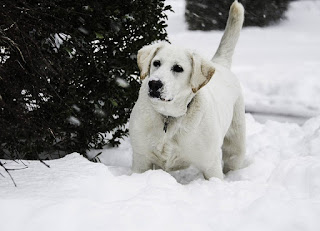
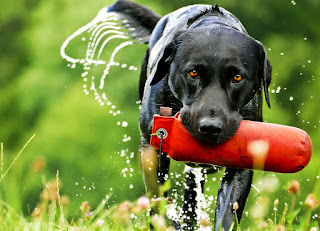
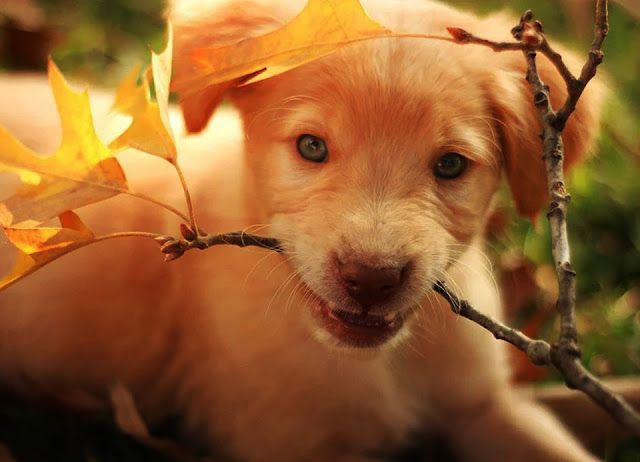
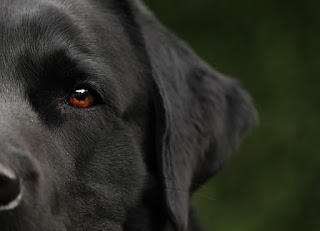

No comments